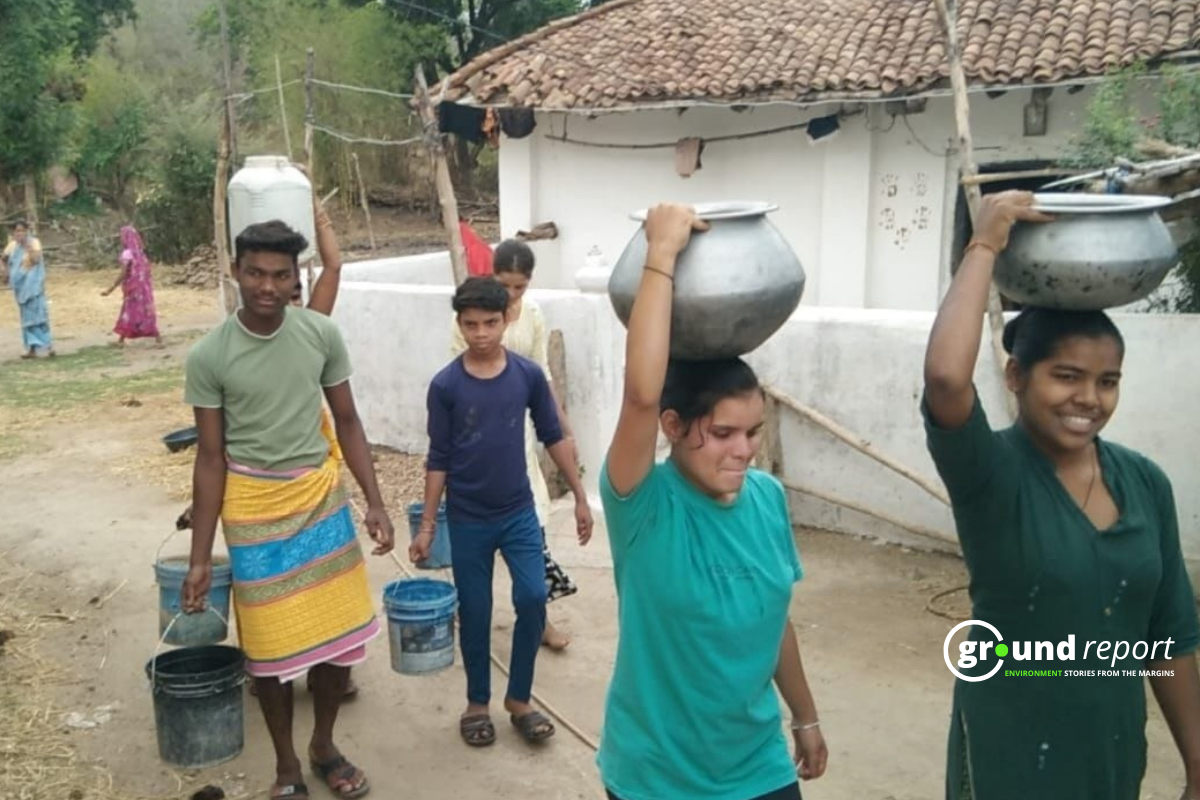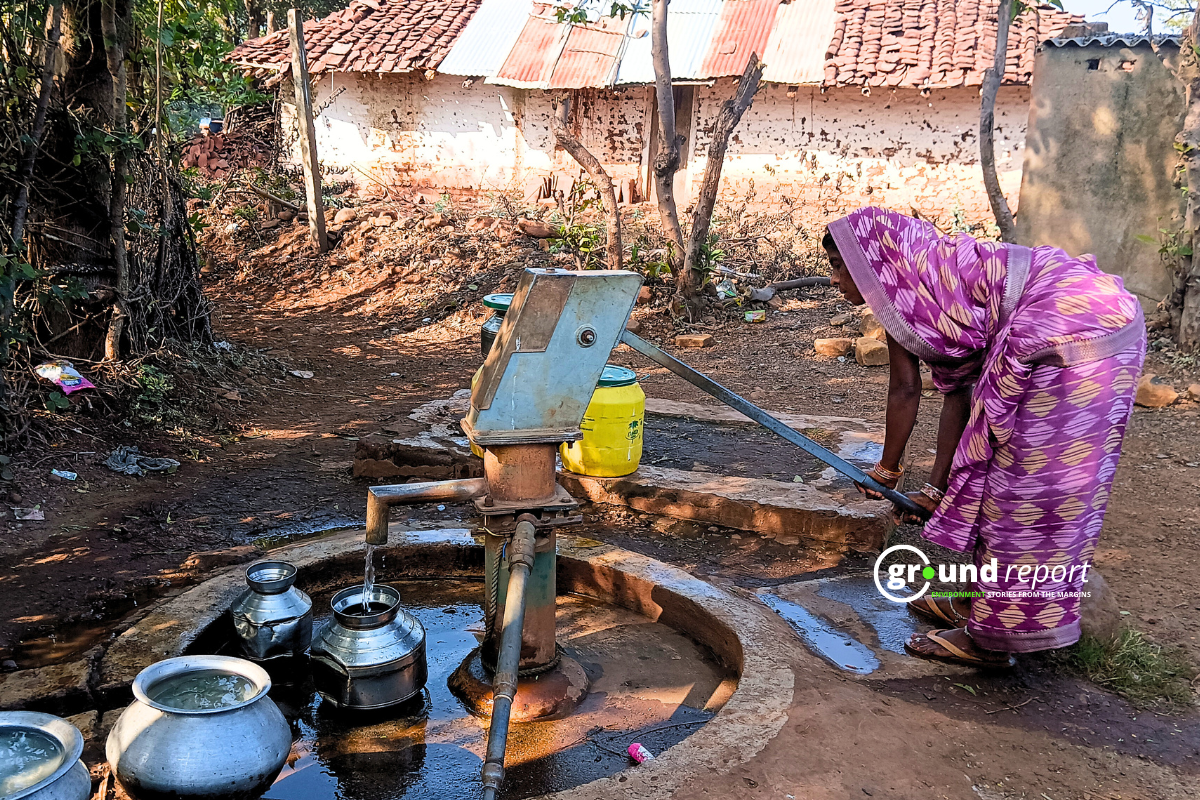As per the latest data released by the Central Water Commission (CWC), water storage levels in India’s reservoirs are cause for concern, with regional disparities evident across the country. The report, dated 18th April 2024, provides insights into the live storage status of 150 reservoirs monitored by the CWC, shedding light on the overall water situation and regional variations.
The latest bulletin accessed by Ground Report indicates that the Central Water Commission (CWC) oversees 150 reservoirs throughout India, encompassing 20 hydroelectric projects. These reservoirs collectively hold a live storage capacity of 178.784 billion cubic meters (BCM). However, the current live storage available in these reservoirs, as per the bulletin, amounts to 56.085 BCM, equivalent to only 31% of their total capacity. Although this figure shows a slight improvement from the previous year, it remains below the ten-year average.
Changes in regional live water storage
| Region | 2024 | 2023 | Decadal average live storage |
| Northern | 32 | 38 | 33 |
| Western | 36 | 43 | 37 |
| Central | 41 | 45 | 39 |
| Southern | 18 | 32 | 26 |
| Eastern | 43 | 38 | 42 |
Regional Analysis
In the Northern Region, including states like Himachal Pradesh, Punjab, and Rajasthan, water storage levels are at 32.5% of total capacity. This is lower than both last year’s levels and the ten-year average.
Moving to the Eastern Region, comprising states like Assam, Jharkhand, and Odisha, there’s a slight improvement in storage levels compared to the previous year. However, they still fall below the ten-year average, with storage at 40.6% of capacity.
In the Western Region, encompassing Maharashtra and Gujarat, storage levels are at 33.9% of capacity. Though lower than last year, they are slightly better than the ten-year average.
The Central Region, including states like Uttar Pradesh and Madhya Pradesh, reports storage levels at 40% of capacity. While this is below last year’s figures, it’s above the ten-year average.
The Southern Region, which includes states like Andhra Pradesh and Tamil Nadu, faces significant water scarcity, with storage levels at only 17% of capacity. This is much lower than both last year and the ten-year average.
Across the country, some reservoirs show storage levels better than normal, such as those in the Ganga, Brahmaputra, and Narmada basins. However, many reservoirs, particularly in the Southern Region, have highly deficient storage levels, indicating a severe water crisis.
Rivers losing water, reservoirs dry
The declining trend in water storage is alarming for 13 major rivers in India, including Rushikulya, Bahuda, Vamsadhara, Nagavali, Sarada, Varaha, Tandava, Eluru, Gundlakamma, Tammileru, Musi, Paleru, and Munneru. These rivers span an expansive landscape of 86,643 square kilometers, providing crucial irrigation water to at least 60% of the total area.
The primary reason behind this significant decline in water storage is the rainfall deficit observed in the catchment areas of these reservoirs. Since March, several sub-divisions monitored by the India Meteorological Department have recorded substantial rainfall deficits. Notably, areas such as the Andaman and Nicobar Islands faced a staggering 96% rainfall deficit, while the Konkan and Goa regions recorded a 92% deficit. Similar deficits were observed in states like Arunachal Pradesh, Assam, Meghalaya, Nagaland, Manipur, Haryana, Chandigarh, Delhi, Punjab, and West Rajasthan.
This rainfall deficit has had severe repercussions on river basins and reservoirs, which are vital sources of irrigation water, meeting annual drinking water needs, and powering hydro-electricity projects.
A concerning aspect of this situation is the close-to-zero water storage observed in about 53 reservoirs across the country. Reservoirs such as Umrong, Kandong, Gumti, Jawai dam, Surya, Barvi, Mula, Bhandardara, Khadakwasla, Dhom, Bhatsa, Manikdoh, Upper Tapi, Urmodi, Bhatghar, Nira Deighar, Thokarwadi, Kanher, Tillari, Mulshi, Dhumbhe Veer, Chaskaman, Panshet, Bhama Askhed, Darna, Yeleru, Donkarayi, Sriram Sagar, Lower Manair, and others are experiencing extremely low water storage levels.
Follow Ground Report for Environmental News From India. Connect with us on Facebook, Twitter, Koo App, Instagram, WhatsApp and YouTube. Write to us at GReport2018@gmail.com and subscribe to our free newsletter.
Don’t forget to check out our climate glossary, and learn difficult environmental terms in simple language.








